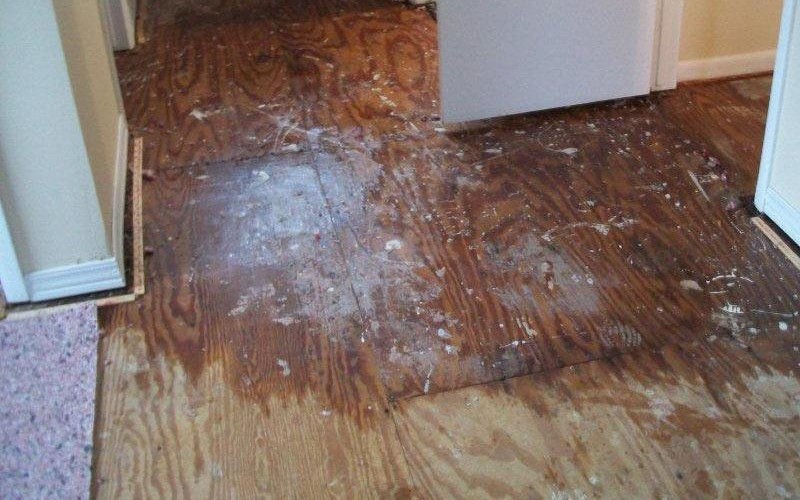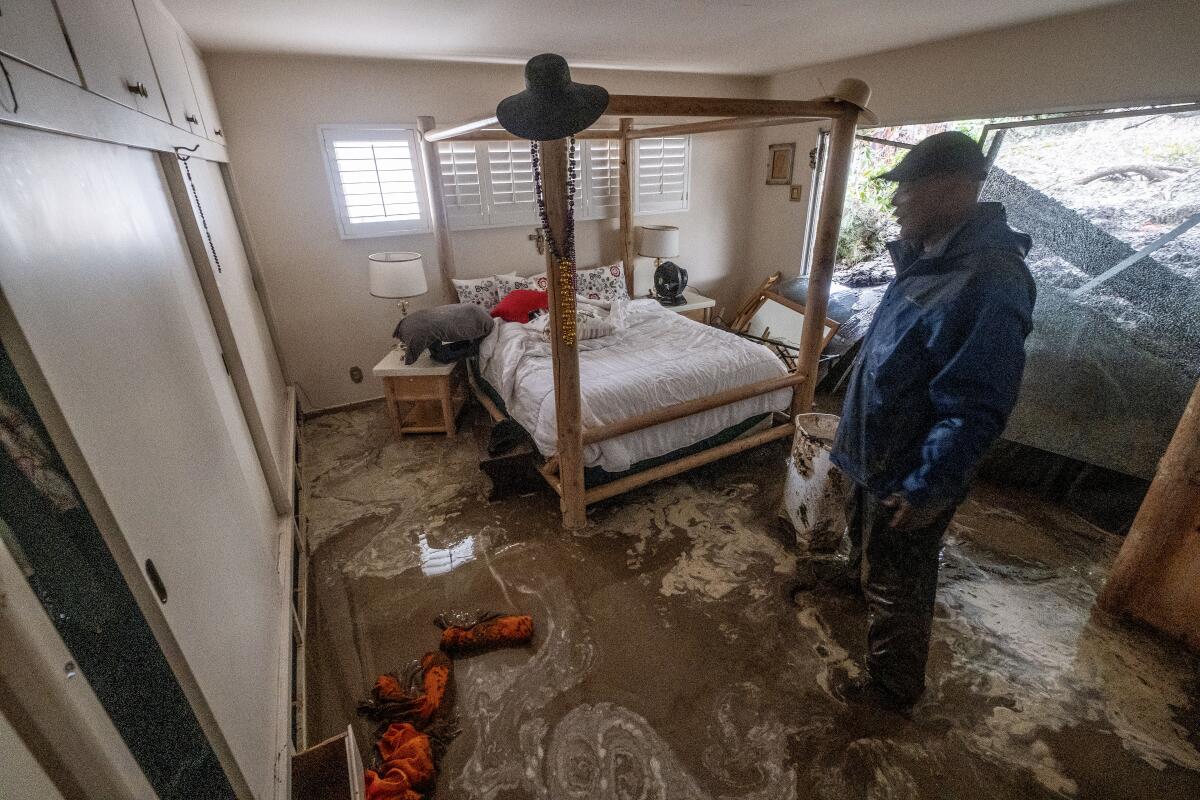Emergency Water Damage Restoration to Restore Your Property Quickly
The Process of Water Damage Clean-up: Guaranteeing Your Home Is Brought Back Efficiently
Water damages can be an overwhelming obstacle for house owners, necessitating a organized and meticulous cleanup process to restore security and performance. At first, a detailed evaluation is vital to determine the degree of the damage and figure out the ideal remediation measures. Following this, efficient water extraction techniques play a crucial function in mitigating additional harm. Nonetheless, the nuances of drying, sanitizing, and eventual restoration are just as important and commonly overlooked. Understanding these phases can make a considerable difference in the result of your home's reconstruction, motivating a closer take a look at what each step requires.
Analyzing the Damages
Upon uncovering water damage, the primary step is to completely analyze the extent of the impact. This first assessment is crucial, as it assists figure out the needed actions for efficient clean-up and restoration. Begin by examining the influenced areas, including walls, ceilings, floorings, and personal items, to recognize the source of the water breach, whether from flooding, leaks, or condensation.
Documenting the damages is vital for both insurance policy claims and preparing remediation initiatives - damage restoration services. Use photos and composed notes to record the severity of the damages, keeping in mind any affected architectural elements and materials. Pay special attention to areas that might not be right away visible, such as behind walls and under carpets, as hidden moisture can lead to further complications, including mold development
In addition, examine the timeline of the water direct exposure. The longer the materials remain wet, the greater the possibility for damages. Recognizing the duration of exposure will inform the urgency of remediation efforts. Eventually, a comprehensive assessment lays the foundation for a successful water damages clean-up procedure, guaranteeing that all affected locations are dealt with effectively and thoroughly.
Water Extraction Techniques

Specialists normally employ completely submersible pumps for bigger quantities of water, which can promptly alleviate flooding in basements or various other impacted areas. For smaller quantities, wet/dry vacuums are commonly made use of to extract residual wetness from carpetings and tough surfaces. Furthermore, utilizing portable extractors enables for targeted elimination in restricted areas or areas with fragile materials.
In instances of polluted water, such as sewage or floodwater, progressed removal methods might entail using biohazard devices to guarantee security and compliance with health and wellness policies. High-powered removal tools are crucial in decreasing water retention in architectural products, which can cause mold and mildew development and architectural deterioration if not addressed without delay.
Ultimately, the effectiveness of water removal techniques plays a pivotal role in the overall success of the water damage cleanup process, laying the foundation for subsequent remediation efforts.
Drying and Dehumidification
Once standing water has been effectively drawn out, the next crucial phase in the water damages cleanup process is drying out and dehumidification. This action is important to prevent additional damage and mold and mildew development, which can happen within 24 to two days in moist environments.
To attain effective drying out, customized tools such as industrial-grade air moving companies and dehumidifiers is employed. Air movers circulate air across wet surface areas, enhancing dissipation prices, while dehumidifiers minimize humidity degrees in the air, advertising a favorable atmosphere for drying out. The mix of these tools ensures that dampness is drawn out from floors, home furnishings, and walls, permitting them to dry extensively.
It is very important to keep track of the drying out process closely. Experts usually utilize moisture meters to examine the moisture content in numerous products, making certain that all impacted locations get to acceptable dry skin degrees. This meticulous technique assists to avoid concealed moisture pockets that might result in structural damage or undesirable mold and mildew development.

Cleaning and Sterilizing
After the drying and dehumidification phase is total, the following vital action in water damage clean-up is cleansing and disinfecting the impacted areas. This procedure is vital to avoid the growth of mold, bacteria, and other pathogens that prosper in moist environments.
The cleaning phase usually involves removing any type of debris, dirt, and contaminants from surface areas making use of specialized cleaning representatives. For tough surface areas, a combination of soap and water or business cleaning products is frequently utilized. Soft materials, such as upholstery and rugs, might require a lot more extensive cleaning approaches, consisting of vapor cleansing or deep removal methods, to make sure thorough cleanliness.

Disinfecting complies with cleansing, utilizing EPA-approved disinfectants to remove damaging bacteria. This step is essential, specifically in areas that may have come into contact with floodwaters or sewage, as these sources can posture significant health and wellness risks.
In addition, it is essential to deal with any kind of staying smells, which may need making use of odor neutralizers or innovative methods like ozone treatment. Appropriate cleansing and sterilizing not only bring back the safety and health of your home but additionally lay the foundation for successful repair and fixings in succeeding phases of the water damages clean-up blog process.
Restoration and Repairs

When the assessment is full, repair efforts can start. Additionally, flooring might need similar focus, depending on the level of water exposure.
It is vital to involve seasoned repair professionals throughout this process, as they possess the competence to take care of complicated repair work successfully. They can help minimize prospective future concerns, such as mold and mildew growth or architectural instability, therefore making sure a safe and habitable living atmosphere. Inevitably, efficient remediation and fixings recover the home's integrity and boost its overall value.
Final Thought
Finally, the procedure of water damage cleaning is critical for recovering a home to its pre-damage condition. Each phase, from analyzing the damages to carrying out reliable water removal methods, followed by comprehensive drying out, sterilizing, and necessary repair work, plays a vital duty in making sure safety and conformity with structure requirements. Reliable implementation of these steps not just alleviates prompt damages but additionally enhances the long-lasting stability and worth of the property.
Water damages can be a challenging obstacle for property owners, requiring a organized and careful cleaning procedure to restore safety and functionality. Ultimately, an see extensive assessment lays the groundwork for a successful water damage cleaning process, guaranteeing that all affected locations are addressed effectively and thoroughly.
Reliable water extraction techniques are essential in reducing damage and stopping more difficulties following a water breach occasion.In final thought, the procedure why not check here of water damages clean-up is important for restoring a home to its pre-damage problem. Each phase, from evaluating the damages to applying effective water extraction techniques, complied with by extensive drying, sterilizing, and needed fixings, plays an important role in making certain security and compliance with structure criteria.